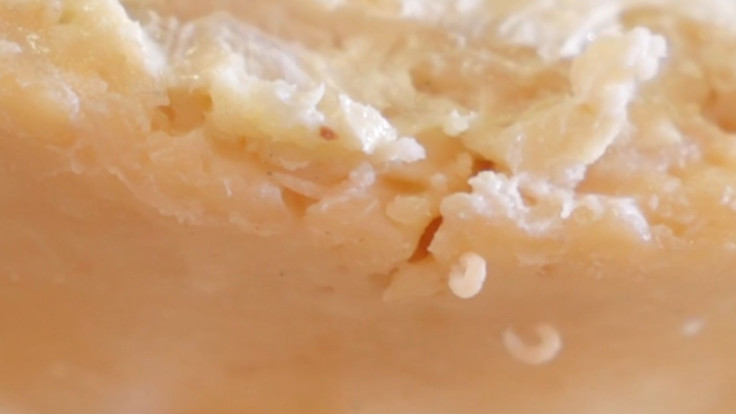Would You Eat Maggot Infested Cheese From Italy? Watch How Casu Marzu Is Made [VIDEO]

For the mildly adventurous eater, there’s sashimi. For the cruel who don't mind munching beaks and tiny wings, balut (fertilized duck egg). For the culinarily insane, Italy presents “casu marzu,” which directly translates to “rotten cheese.” The European Union banned the cheese decades ago, which is infested with squirming live maggots. But that hasn’t stopped intrepid Sardinians.
Casu marzu is produced on Sardinia, the large island about 275 miles due west of the Italian mainland. The cheese is made from sheep’s milk, which the farmers heat and let cure for three weeks — that produces pecorino cheese, which is traditionally used for grating, often on pasta. The cheese whizzes then cut the crust off the top, which allows flies to buzz on in and lay eggs in the stinky cheese. Normally, that would be the exact opposite of what you’d want, but it’s what defines casu marzu.
After flies scope the goods and lay claim to their conquest, the cheese wheels are stored in a lightless, cool hut for two to three months — a sufficient amount of time to reflect on poor life decisions, for example — and the fly larvae hatch and get to work devouring the cheese. At that point, the “delicacy” is ready to be served.
The rotten cheese is usually served and eaten while the maggots are still writhing around, because dead maggots usually mean the cheese is no longer palatable. Consumers of the special cheese usually wash it down with red wine. Possibly to drown the memory of what they’ve just eaten, but more likely because they’re Italian and they have wine with everything.
Casu marzu is made only in Sardinia. The EU allows it on the Mediterranean Island because “it’s a traditional food made in a traditional way.” Maybe they should ask the Icelanders to share some of their Hákarl.
© Copyright IBTimes 2024. All rights reserved.






















